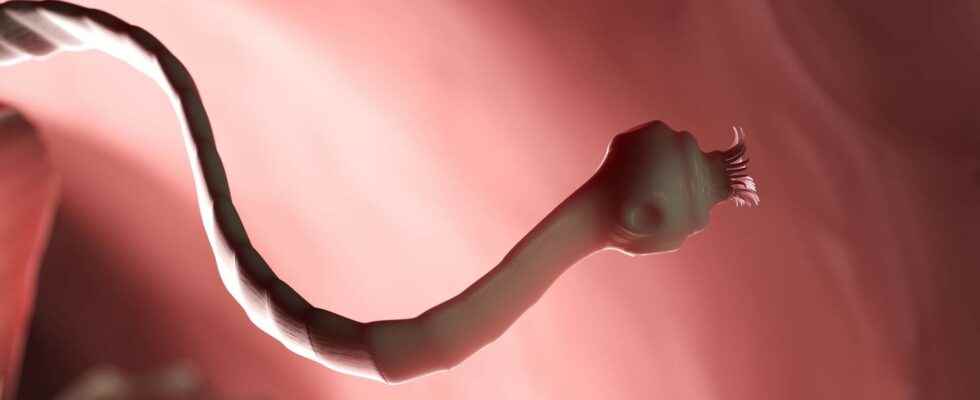Parasite of the’small intestine In humans, the tapeworm or tænia, or tapeworm, belongs to the Cestodes class and can reach several meters in length. Several cash can contaminate humans as Tænia saginata (transmitted by beef) and Tænia solium (transmitted by pigs). Hermaphrodite, it is presented as a long flat ribbon comprising three parts: the head or scolex carrying the fixing organs, the non-segmented neck and the body made up of rings. The male rings initially become female with age so that the latter are stuffed with eggs, evacuated by the contaminating stool. He can live for several years without treatment.
Life cycle of the tapeworm
In the external environment, the rings release the eggs which are very resistant. Disseminated in nature (pastures, sludge), they can be ingested by a bovid or a pig. The embryos are then digested, cross the intestinal mucosa and invade the entire host organism via the blood circulation and lymphatic. The larvae, called cysticerci, have a scolex and suction cups and are located in the muscles where they calcify for several months. The man who is the definitive host is infected by eating poorly cooked beef or pork.
Health impact, symptoms and treatment
Most often, the infection goes unnoticed. Some nausea, vomiting can appear associated with an abnormal weight loss since the worm feeds on the nutrients provided by the food of its host. Usually people find rings emitted in their stools and treatment dewormer is enough to expel the worm to lead to the healing.
In the case of a contamination with Tænia solium, the presence of larvae in the tissues can have serious consequences on health. This pathology Where cysticercosis causes severe headaches, blindness and fitsepilepsy which can be fatal when the larvae encyst in the brain. In order to prevent this pathology, public health interventions are being developed in the animal, human and environmental health sectors.
You will also be interested
Interested in what you just read?
.
fs7
